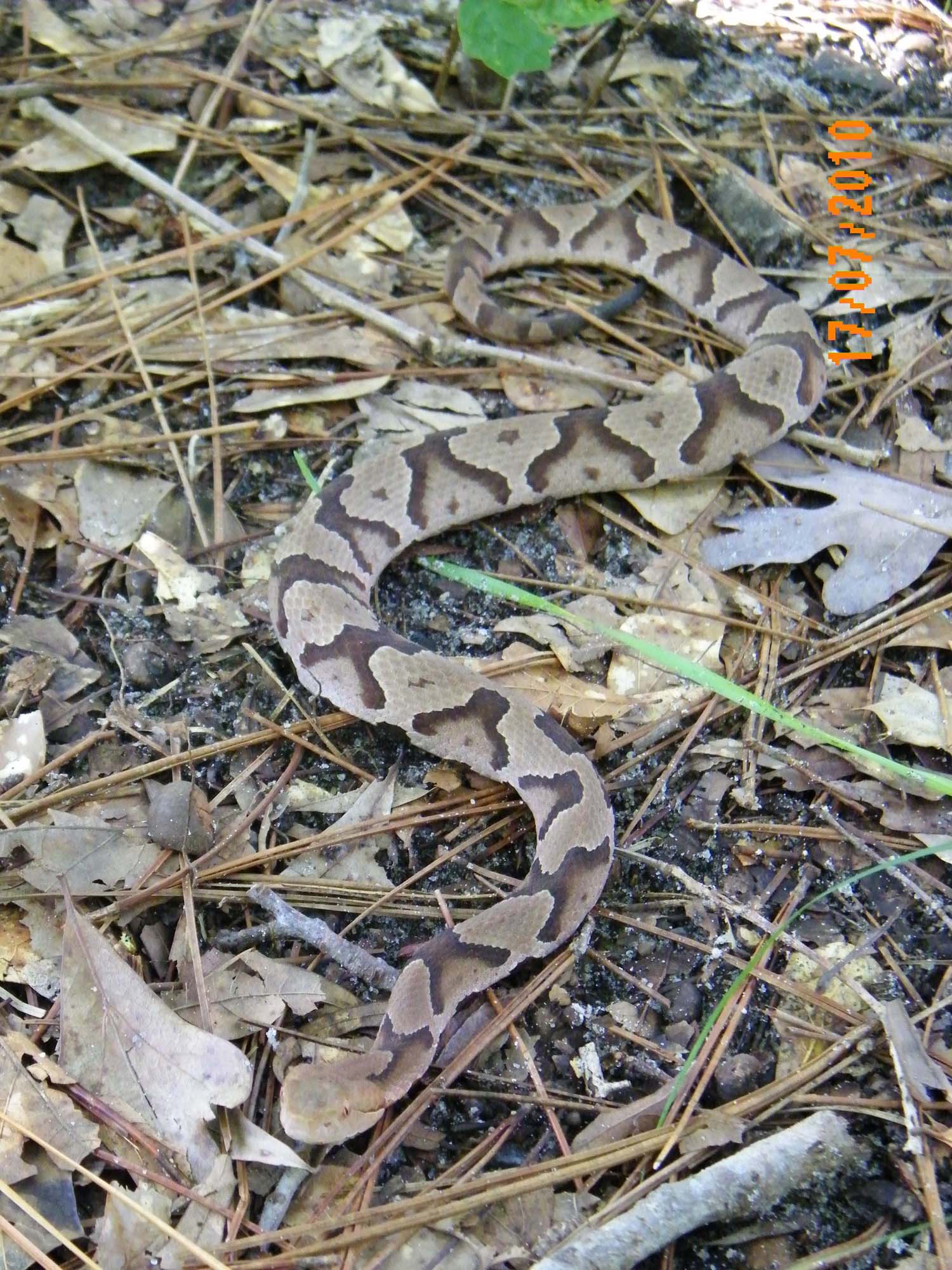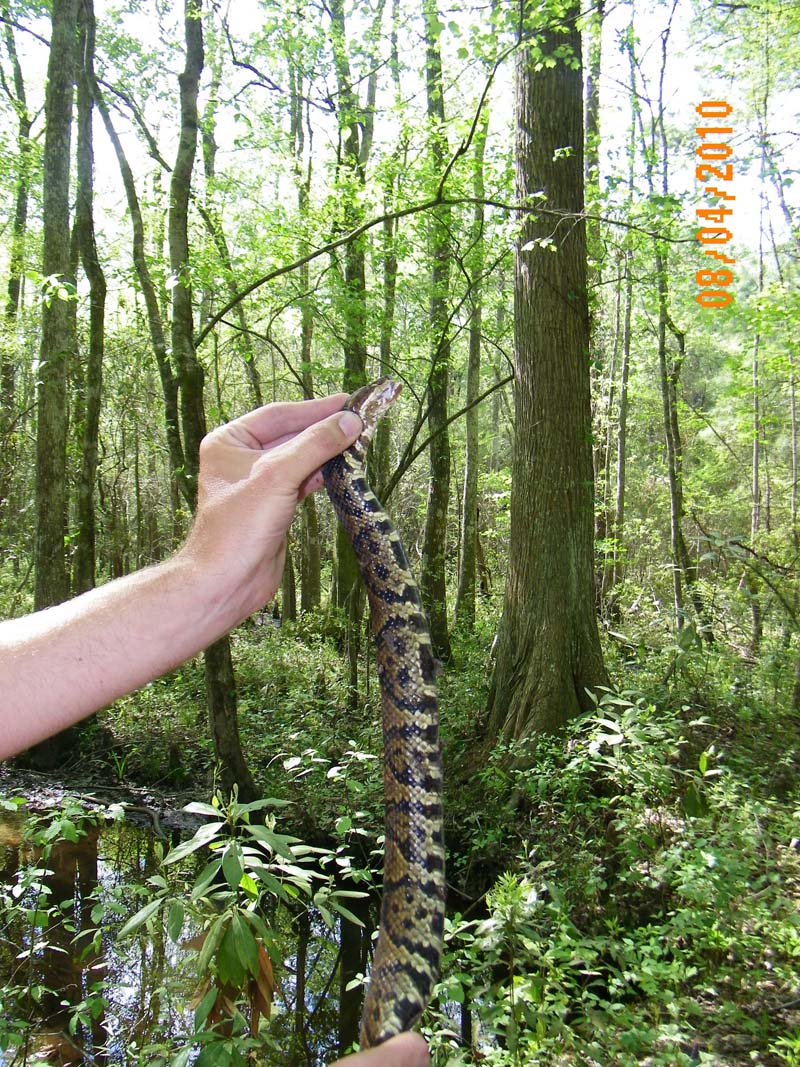 |
 |
| Southern copperhead (Akgistrodon contortrix), Conway, SC | Cottonmouth (Agkistrodon piscivorus), Cox Ferry National Wildlife Refuge, Conway, SC |
| Reproductive biology and placentation in viperid snakes |
In South Carolina, the copperhead (Agkistrodon contortrix) and cottonmouth water moccassin (Agkistrodon piscivorus) are two common viperid species, but relatively little is known about their reproductive physiology and almost nothing is known about the structure and functional characteristics of their placentae. Copperheads and water mocassins are viviparous with females providing all of the oxygen and nutrient requirements for embryos during gestation. Most viperids are thought to be lecithotrophic, with the majority of nutrient substrates needed for embryonic growth provided at the time of ovulation by the yolk supply. Many North American species of pit vipers have relatively low reproductive rates with females of some species giving birth every other year or every two years. Whereas populations of many North American species of rattlesnakes are declining due to anthroprogenic causes, copperheads and cottonmouths appear to be able to maintain relatively stable populations in suburban areas where human populations are relatively high.
The aims of project are to characterize placental development during gestation and determine the degree of placentotropy exhibited by A. contortrix and A. piscivorus. In addition, the study will provide much needed information on reproductive life history traits of populations of A. contortrix and A. piscivorus on the South Carolina coastal plain. Understanding important aspects of reproductive biology in these common species of viperids may help explain why they are able to persist in relatively populated areas whereas populations of other viperid species such as some species of rattlesnakes are not.